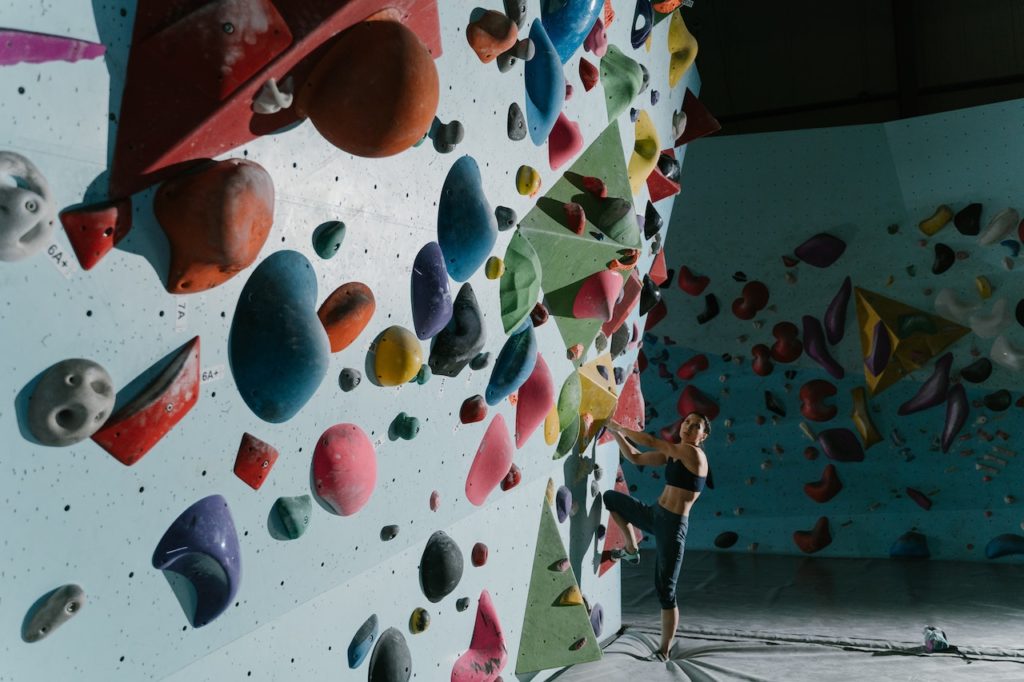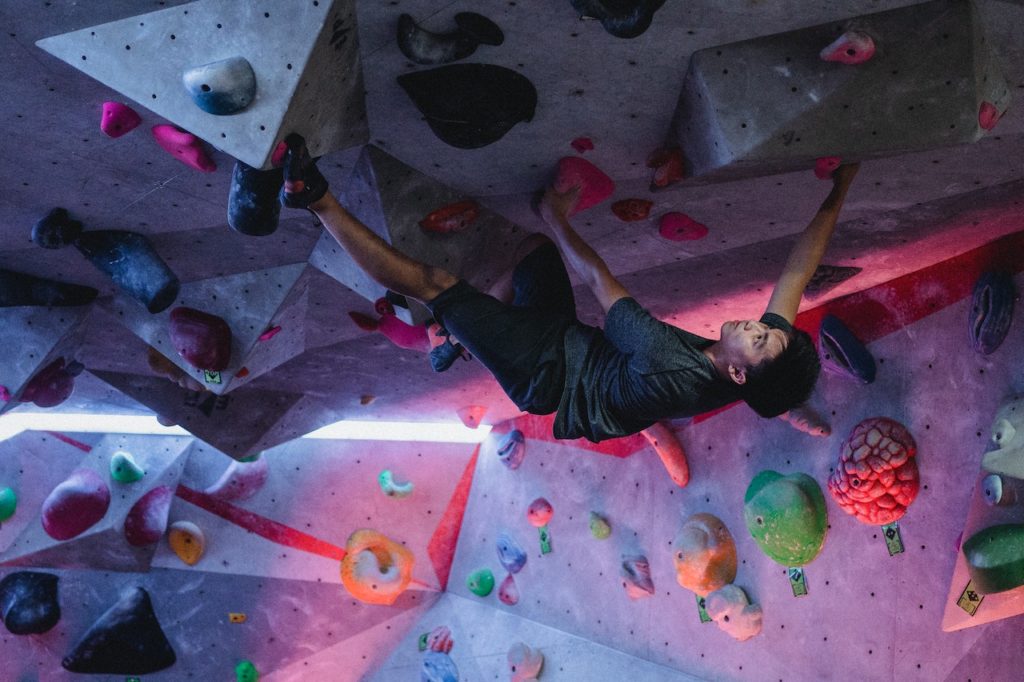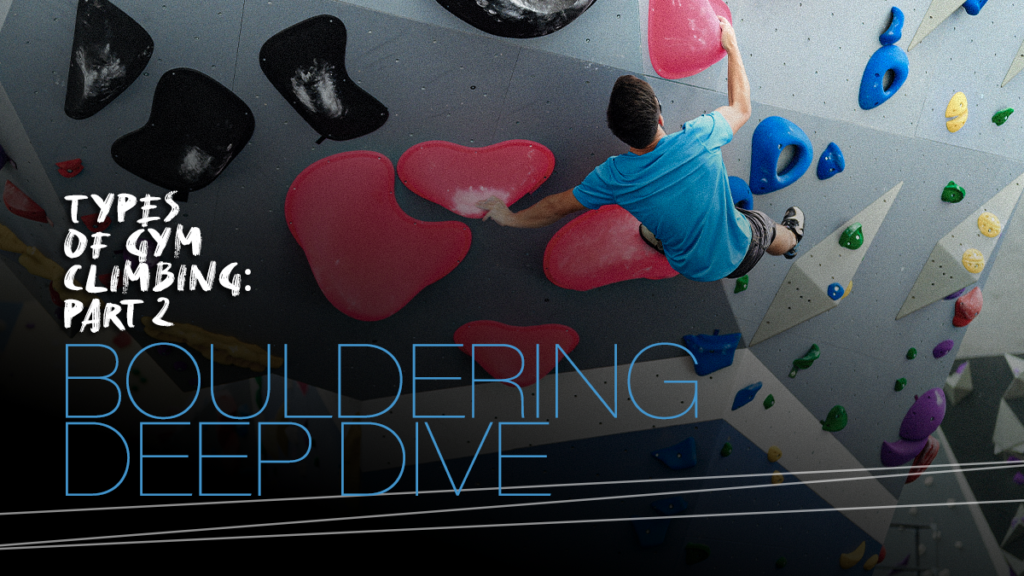What is the difference between climbing and bouldering? Do you have to get tangled up in the giant walls and ropes to try out rock climbing? Can you try rock climbing if you are afraid of heights? Whatever questions you may have about bouldering, we’ve outlined the basics and have some tips on how to crush it next time (or the first time!) you’re at the gym.
In climbing gyms, bouldering is done on shorter walls or other shaped surfaces where climbers are not attached to ropes. Bouldering is a great way to get into climbing and get a taste of the sport, as it requires minimal gear, only shoes, and chalk, based on preference. Bouldering doesn’t require a partner like other forms of climbing, so if you’ve not yet found a gym buddy, no worries!
Bouldering Grades

You’ll follow color-coded routes often rated by difficulty on a numerical scale when bouldering. These ratings are also referred to as grades. Grades consider the type of holds used on the route, the steepness or terrain of the climb, and the level of skill needed to complete the route.
Bouldering grades come in a variety of forms. Traditionally, boulder problems are graded on the V-Scale, which ranges from V0, the most manageable climbs, to V10+, the most challenging climbs. Many climbing gyms have adopted different grading scales in recent years because climbing grades are incredibly subjective. What may be “V2” for one climber may feel like “V5” to another based on attributes like height and wingspan. So take a look at the grading scale used by your local gym!
Falling While Bouldering
As you are not attached to a rope, bouldering presents more risk. As the saying goes: when bouldering, all falls are ground falls! You may encounter bouldering walls that require you to dangle or hang over the ground or even walls that slope slightly forward rather than a wall that remains vertical. These differences present opportunities to work on different techniques and strength-based abilities but also pose challenges that introduce additional risk. Finding yourself in different positions with the ground means you might fall in different ways, some more dangerous than others. Because of this, it is vital to remain aware of your surroundings while bouldering and practice and utilize proper falling techniques. Ask a gym employee for instruction if you are unsure of what this looks like, and always ensure you are familiar with a gym’s bouldering policies.
You won’t constantly fall, though! Once a route has been finished, the climber must climb back down using downclimbing. When downclimbing, you may climb the route in reverse or use any hold available to climb back down safely; many gyms also set paths of easy-to-grasp holds specifically for this.
Benefits and Challenges of Bouldering

Because climbers must rely on their bodies to keep them on the wall while bouldering, this type of climbing is particularly strength intensive, this doesn’t mean you already have to be ripped to get started, just that you might be by the time you finish! As you become more comfortable with your strength and ability to stay on or make it off the wall safely, start drawing attention to your technique. Learning skills such as maintaining a better grip on holds, relying on your limbs in new ways, and even moving your body more intentionally to help conserve energy while climbing can radically change your experience and ability.
Climbing with others is one way to help hone in on technique practice while also observing different ideas and skills from those around you. Even though bouldering is a solo sport, it can be collaborative! When struggling to figure out how anyone could make a seemingly impossible move, joining other climbers can help deflate frustrations, inspire new tactics, and build your comfort in the gym.
If you want to start bouldering or improve your rad skills, ask your gym staff for guidance or checkout technique resources to learn more. Let us know how your bouldering journey is kicking off in the comments below!

